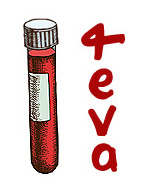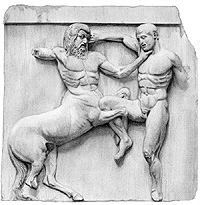The Fantasy Club/Stick Attack
I spend much time training alongside of Kenpo and FMA people who practice many defenses against blunt extension weapons. There defensive applications vary, but always succeed against the ‘uke’; the zombie-like aggressor of martial arts myth, played by the sympathetic training partner or assistant. When I see these techniques, despite the obvious and natural compliance of the ‘uke’ or ‘feeder’, I believe that I am viewing sensible defensive measures against that specific attack.
These martial artists, are, however, rehearsing suicide, setting themselves up for combative failure.
Just this week I realized that my article Five Beautiful Deaths was short one death.
The Reasonable and Realistic Deduction
These men I am referring to are highly trained martial artists, who are wise enough to realize that they are preparing their students to face untrained aggressors, not to duel with weapons. The process of formulating the typical attack begins with jettisoning any notion that the attacker will advance like Errol Flynn or Dan Inosanto.
This is the correct point of departure. Unfortunately it tends to depart down the wrong path.
The Reasonable Yet Unrealistic Conclusion
The specific attack is built on the theory that the attacker will have complete overwhelming confidence in their weaponry and attack in the most obvious and impractical manner.
The specific attack is a right-handed diagonal one-handed stroke to the head done from a left lead into a step-through with the right—a full commitment stroke.
The correct aspects of this deduction are that the stroke will most likely be diagonal, and from the aggressor’s right side.
Forensic Complications
One problem with the formulation of the attack is that it is almost always enacted with a stick, as that is the weapon commonly laying around the Kenpo or FMA school. In reality, most attacks with blunt extension weapons are with club-like objects that are unwieldy [like two-by-fours] or weighted on the end [like baseball bats].
So, because the wrong type of weapon is being used in training, the manual portion of the tactical assumption is that it will be used one-handed.
The small proportion of blunt extension weapon aggressions with sticks are evenly split between stick-uses by teenage gang members [who run-up and reach, and rarely shift leads with a step] and police officers, who, as often as not, use both hands on their baton.
So, the incidence of one-handed stick use by individual aggressors is nearly non-existent.
Understanding the Clubber
The biggest problem with this deduction is not, however, forensic, but behavioral. Armed aggressors generally lack confidence—hello, it is why they chose a weapon! Second, all armed aggressors access a weapon for an advantage, and are primarily concerned with weapon retention. While they will not use advanced weapon retention skills as with an FMA fighter; they will tend to use primitive weapon retention tactics; primarily low-commitment multiple strokes with both hands on the weapon. This is the typical use of a bat: lots of short armed check strokes until the defender is disabled.
Full-commitment strokes by individuals are typically executed as blindside surprise attacks and strokes of desperation.
Verbal and Situational Complications
More often than not the clubber is a member of a group and is interested in conversation, punishment, and compliance. It is usually not a murder attempt. I have interviewed nine vigilantes and illegal debt collectors, and they all cited bat use as a way of imposing their will without killing the target while being able to communicate their demands.
Let’s try talking our way out of this one.
The Logic of Force
Logic dictates that the mentally weak yet hopefully dominant clubber, is primarily concerned with maintaining his armed advantage over the unarmed defender.
Most club uses that feature a single full commitment stroke are successful surprises or unsuccessful strokes of desperation against an overwhelmingly large aggressor.
Most clubbing attacks feature repetitive noncommittal two-handed strokes from a variety of approach postures, but mostly ‘squared up to the defender’.
When a teenage stick-user tries to close the distance the methods are evenly split between the ‘run-up’, a full commitment shift-step, and a reaching lunge.
While diagonal forehands are the most common attack method, a lateral forehand is the most deadly, and is used with increasing frequency against targets perceived as being dangerous, like you martial arts guys.
For the full spectrum of tactics and behaviors see my book The Logic of Force, from Paladin Press.
Reminder
Recall that the one type of aggressor that uses sticks effectively usually closes the distance with a supplementary tactic [push, trip, shoulder butt, stiff-arm] and that defending against them is not advisable.
Do not fight baton-armed cops—and avoid fighting cops in general, please.











